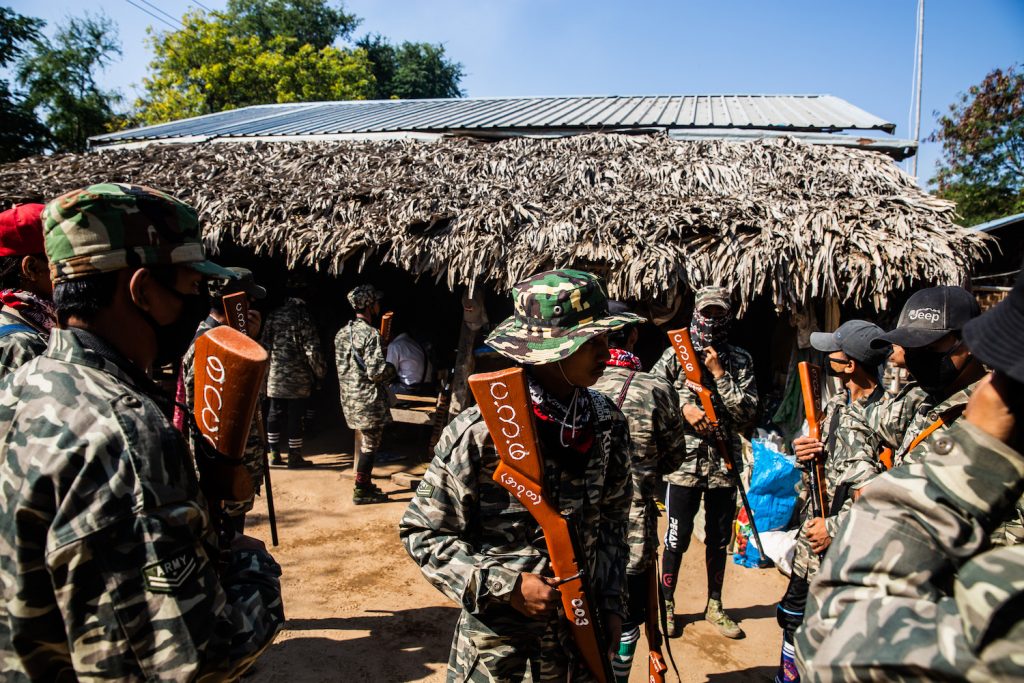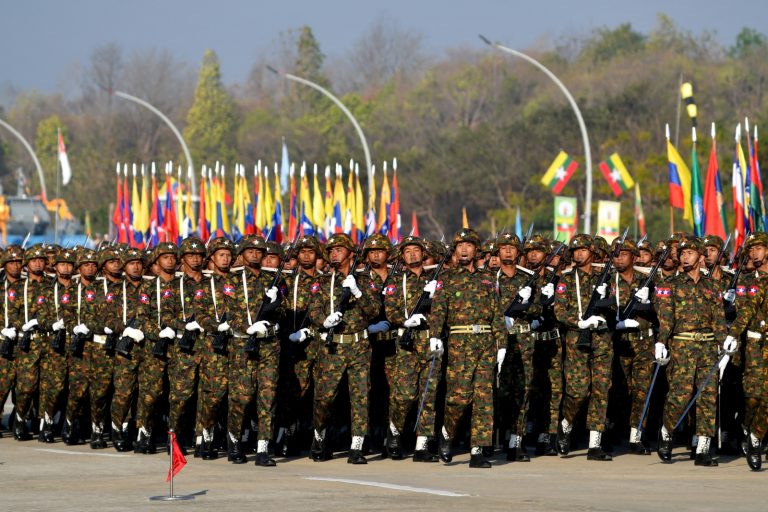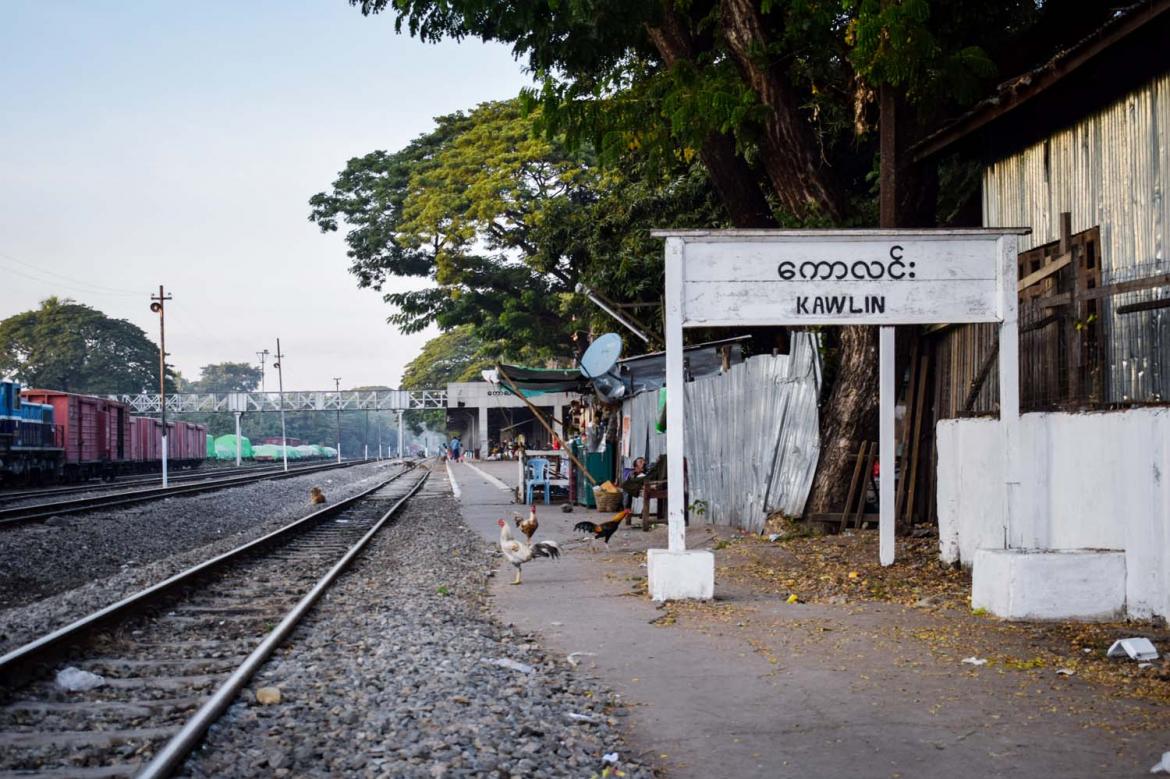With no financial support from the international community, the National Unity Government is working to raise funds for the resistance, but many groups fighting on the frontlines don’t have enough money to arm more than a fraction of their fighters.
By FRONTIER
“Hello, please ask for our account number to make a donation…we will respond as soon as we have internet connection,” reads an English translation of the automated response sent from the Facebook page of People’s Defence Force-Kalay Battalion 1.
This is a common form of outreach for many resistance groups in Myanmar, which are relying on online followings and innovative social media crowdfunding to sustain their revolution against the military junta.
PDF-Kalay Battalion 1 operates in Kalay Township in Sagaing Region and has over 102,000 followers on Facebook, where it regularly posts videos and pictures of training and various community outreach initiatives.
Most prospective donors communicate with the group over Facebook messenger before sending money through online transfer systems like K Pay and Wave Money. However, internet restrictions and regular power outages make virtual fundraising a challenge.
Despite some financial support from the National Unity Government, the group depends on these followers for donations to purchase weapons, equipment, food and medicine. Even together, the money raised is still only enough to arm a fraction of the resistance fighters who joined the revolution in opposition to last year’s coup and subsequent crackdown on peaceful protesters.
Under-funded and under-armed
PDF-Kalay, which has nine battalions, is one of many anti-coup armed groups that operate under the command of the NUG.
Dr Sasa, a spokesperson for the NUG as well as its Minister for International Cooperation, told Frontier that resistance groups fall into one of three categories: those that operate directly under the NUG’s Ministry of Defence, those that are under the command of an ethnic armed organisation allied with the NUG, and all others. The first category includes groups founded by the NUG and those that formed independently and later submitted to the parallel government’s authority.
Dr Sasa maintained that all groups, even those that are unaffiliated with the NUG, still look to the parallel government for guidance. Altogether, he estimated that there are almost 2 million resistance fighters in the country. Frontier has not been able to independently verify either of these claims.
Dr Sasa claimed that there are more than 270 PDF battalions under the NUG’s control, and another 500 “local defence force organisations” that are cooperating with the NUG to varying degrees. The NUG claims to have formed these 270 PDFs and that they operate entirely under its chain of command, whereas local defence forces are formed organically and operate more independently.
While PDF-Kalay falls within the first category, loyalty to the NUG does not guarantee that it receives the funds needed to send all of its fighters into combat. In May, PDF-Kalay Battalion 1 received a one-time transfer of K7 million (around $3,780), but this wasn’t enough to buy even a single gun at the current inflated prices, and the group had to solicit the remaining money from donors.
“I bought an M4-Carbine the other day for K15 million [around $8,200]. It used to be K6 million [around $3,280] but the brokers overcharge and continuously cheat people,” explained Japangyi, the pseudonym used by a fighter who oversees fundraising efforts.
“But there are so few guns for sale nowadays that we don’t have a choice – when a gun comes along we have to buy it.”
He said they requested a second transfer from the NUG, which was agreed to on paper, but they have yet to receive it. Along with money, Japangyi said that they received a shipment of around 15,000 bullets from the NUG to be divided among the nearly 1,200 fighters in PDF-Kalay’s nine battalions. Of the more than 200 fighters in Battalion 1, only 20 are armed and actively fighting at any given time, while another 20 plant landmines, according to Japangyi. The remaining members spend their time training or guarding the camp.
With so few fighters equipped for the frontlines, the group is often outnumbered by junta soldiers in the field of battle. Japangyi explained that while the group has occasionally engaged directly with the military, most of the time they can only afford to plant landmines then quickly retreat before the situation escalates.
“In most battles we have to leave right after we attack because of disproportionate weapon power and low ammunition,” he noted. “We usually attack like this three to five times a month. Sometimes we clash [with the military] for a few days, but we don’t have enough money or ammunition.”
Sagaing Region, where PDF-Kalay operates, has become the epicentre of violence in the country, with regular clashes, civilian massacres and arson attacks on villages. The Institute of Strategy and Policy estimated that 15,530 homes have been destroyed in Sagaing Region as of May 26, the most out of any state or region.
U Htin Linn Aung, the NUG’s Minister of Communications, Information and Technology, confirmed to Frontier during a press conference on June 22 that the parallel government’s Ministry of Defence has raised $44 million. He said that most of this was allocated to “practice, ammunition, allies who are injured and also some other emergency and administrative expenses.”
The NUG’s new cashflow marks an increase from its earlier defence budget published by the NUG Ministry of Defence on its six-month anniversary in March. In the earlier budget, it claimed to have raised $30 million in public donations, around $25.5 million of which went to PDFs with just over $2 million going to other resistance groups.
But even with that increase, the NUG is still drastically short of its estimated budget needs.
In an interview with Frontier on June 10, the spokesperson for the NUG President’s Office, U Kyaw Zaw, said the NUG estimates it needs an $800 million budget – $100 million more than the first estimate it published in September and more than 16 times the current operating budget.
Both Dr Sasa and Kyaw Zaw recognise that this deficit means they are not able to fully support all resistance fighters in the country.
“I can understand that there will be frustration from our freedom fighters on the ground on why it is taking so long for us to reach them,” said Dr Sasa. “Until today we don’t have international support to overthrow this military genocidal dictatorship. The reality is that we have so many difficulties, but we are doing everything we possibly can.”
The NUG and many of the armed resistance groups point to the lack of financial support from the international community as a key reason for why resistance groups are under armed.
The European Union, United States, the United Kingdom and Canada, have imposed sanctions on military-linked individuals and entities while expressing rhetorical support for the NUG. But while they have made efforts to cut off funding to the military, they have not taken any action to increase funding to the resistance, including declining to give the NUG access to $1 billion in foreign reserves that was frozen by the US after the coup.
In a recent report for the Center for Strategic and International Studies, Mr Michael Martin, an adjunct fellow with the centre’s Southeast Asia Program, wrote that based on self-assessments by PDFs and ethnic armed organisations (EAOs), it would cost less than $30 million to supply each operational group with the weapons they would need to overthrow the junta. These include a “supply of 50-100 Singer-like missiles and a few thousand military-grade M4 automatic rifles”. The total cost would be less than the $1 billion sitting idle in frozen reserves.
Martin told Frontier that even though in military terms “anything below a billion dollars is not a significant amount”, no foreign government has stepped in to help.
When asked about funding and military support to the NUG, the US embassy and Global Affairs Canada both dodged the question, pointing instead to their engagement with and support for the pro-democracy movement in general. The UK took a more decisive stance. An embassy spokesperson told Frontier that “increasing the flow of weapons into the country will only serve to increase casualties, mass displacement and the already dire humanitarian situation.”
Mr Zachary Abuza, a professor at the National War College in Washington DC and an adjunct at Georgetown University who focuses on Southeast Asian politics and security, says that the reason the NUG has not received foreign funding from these countries, especially the US, is because Myanmar is considered “such a low priority”.
“Other than values like the promotion of democracy, Myanmar just doesn’t matter. It doesn’t threaten us [the US] directly, there is no compelling security argument,” said Abuza.
He contrasted the situation in Myanmar to the Russian invasion of Ukraine, where Western governments rushed to supply money and arms.
Abuza said this is largely due to the “Euro-centric” nature of American foreign policy and the threat that a country like Russia poses to the US – a threat that the Myanmar military does not pose. He also noted that governments like the US see the war in Ukraine as an invasion of a sovereign state, while the war in Myanmar is a civil conflict and thus “a matter of internal affairs.”
But for those in Myanmar sacrificing everything, these arguments fall on deaf ears.
“The people of Myanmar have given as much as they can. In some places like Sagaing, they even take out their earrings and their belongings to give to PDFs. We are asking the international community to support every possible means that they can, including lethal and non-lethal support,” said Dr Sasa.
“We could end this war against terror if we can get international support – if we got 5 percent of what the Ukraine is getting, we could have ended this nightmare a long time ago.”
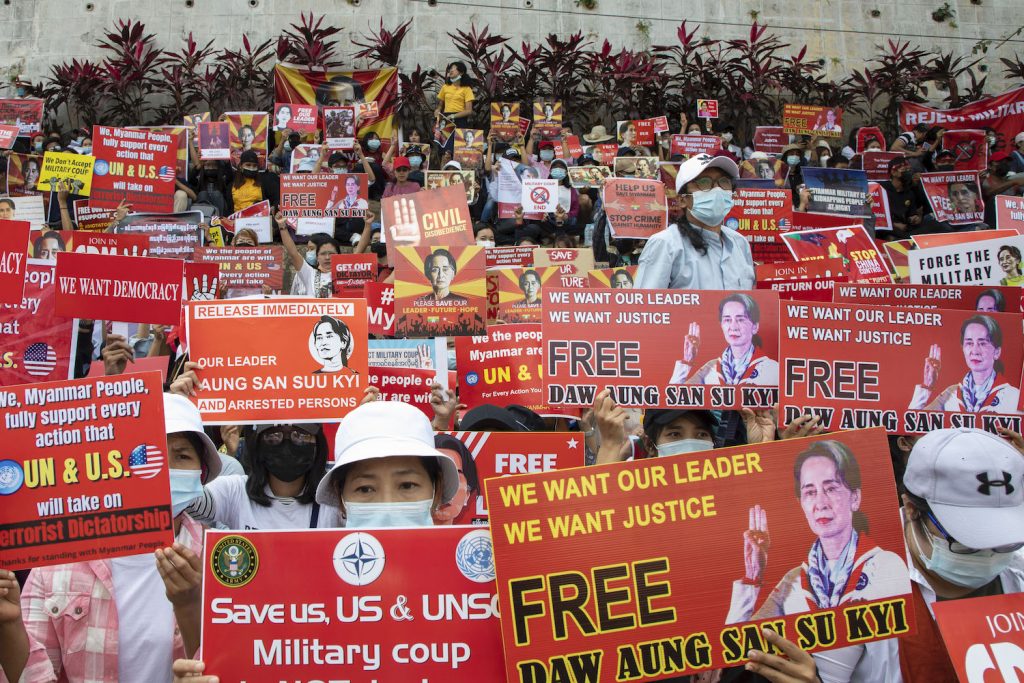
NUG spread thin
But with foreign military aid still looking very unlikely, resistance groups are forced to scrape by. The NUG is tight-lipped about how money is allocated – Kyaw Zaw said it’s “distributed based on military need” and refused to elaborate.
Even some of the most prominent PDFs, like Myanmar Royal Dragon Army (MRDA), say they are not receiving the funds they need to arm all their soldiers, and are actually turning away new recruits.
The MRDA, which is headquartered in Pale Township in Sagaing Region, has around 5,000 soldiers in four battalions across four regions. Most of them are armed with nothing but a Tumi hunting rifle, according to the group’s leader Bo Nagar. The PDF received a relatively large sum of K42 million ($22,650) from the NUG last November to manufacture weapons, then nothing.
In May, after months of waiting, the MRDA published a letter to the NUG on Facebook, criticising Minister of Defence U Yee Mon for failing to follow up on assurances he made during a meeting with the group in March. Bo Nagar told Frontier that it was meant to serve as a reminder.
“Because they are so busy, we were worried they would forget,” he said. “We know the NUG is trying to meet all the demands, but we hope that they will get a better system to provide for the PDFs.”
The reminder worked. The MRDA received a second transfer of K32 million ($17,255) – a larger payday than many smaller PDFs, but still only enough for a handful of guns.
Beyond the shortfall in weapons, the lack of money also means that resistance fighters are not receiving any kind of salary. When asked whether fighters were paid, the representatives from resistance groups laughed.
“Our members are not paid a salary because they are volunteering to fight against the junta and they want to be free from the military coup. Because resistance fighters are working for the country, people donate food and money,” explained Bo Nagar.
While some groups like the MRDA get by with donations, fighters from other groups, particularly smaller battalions with little money to spare, have to work to make ends meet.
Nitrogen, the alias for a fighter from the 300-member Bo Thurein Battalion in PDF-Yinmabin, told Frontier that many of his comrades can only serve part-time.
“Most of our fighters can no longer support their families. So some members do not stay with us all the time – they join the fighting then they go back to their villages and resume their normal work like farming,” he said.
It’s a similar story in neighbouring Magway Region, another resistance stronghold. PDF-Myaing, the largest resistance group in Myaing Township, can only afford to arm a small portion of its fighters and paying salaries is out of the question, according to Cross, the group’s head of operations.
PDF-Myaing, which is also under the command of the NUG, has around 1,500 fighters but only 100 are currently fighting against junta forces, said Cross. Since August, the group has received four separate instalments from the NUG, totaling approximately K10 million (around $5,470). But as the main point of contact between the NUG and other PDFs in the area, PDF-Myaing has distributed these funds among resistance groups. Much of it also goes towards training and medical supplies.
When it comes to weapons, PDF-Myaing mostly relies on funds raised independently of the NUG to purchase guns like AK-47s or M4-Carbines, each of which costs the group between K10 and K12 million (between $5,470 and $6,560) and are often purchased through brokers. Cross said that they’ve been able to purchase around 150 guns, mainly in border areas near Thailand and India. The NUG did ship the group about 50 M-22 handguns and spare parts in multiple instalments.
“Most of our support comes from the people who are donating,” said Cross. “We have regular communication with the NUG and its weapons procurement team, including Defence Minister U Yee Mon. We have a meeting every 15 days with them where we tell them what we need, but we have not yet received very much.”
One of these procurement teams is the People Soldiers’ Production Team (PSPT), a vast network overseen by defectors working to equip PDFs with arms and train fighters to manufacture their own equipment.
Nyi Thuta, a former military captain who defected in March 2021, works as a focal person for the PSPT. He says there are around 100 groups in the network – some are directly under the NUG while others have more informal arrangements with the parallel government. But even though his team works under the NUG, only 30pc of their budget is paid for – the remainder is covered by donations.
“We don’t have enough money, but because there are hundreds of teams that the NUG is supporting we have to make do with what we have. The NUG also has to send money to PDFs,” said Nyi Thuta.
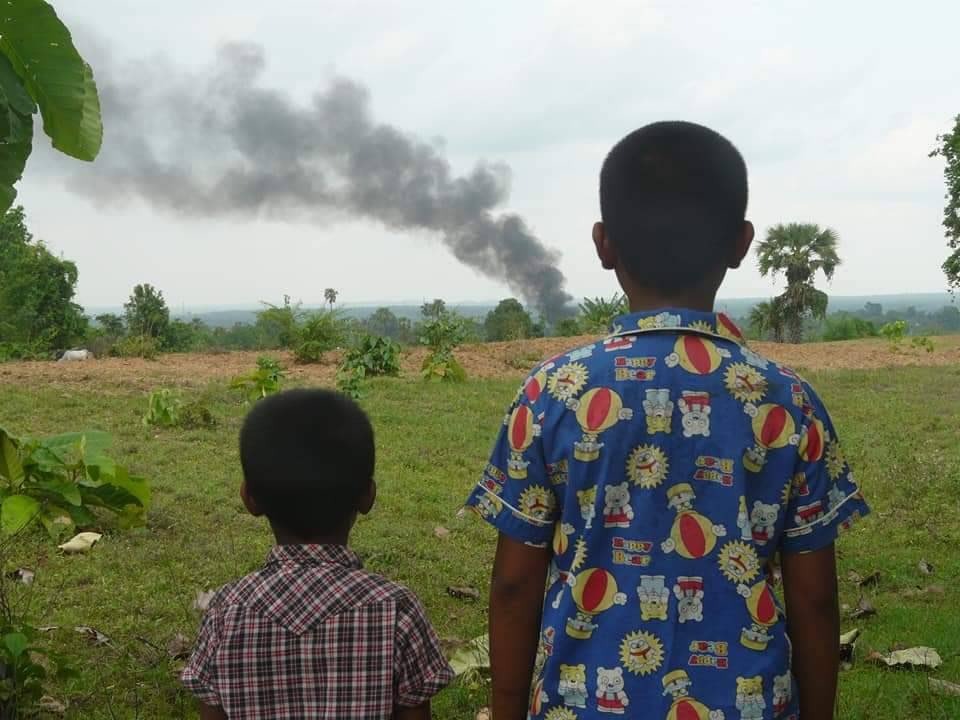
Funding the resistance
Since it formed last April, the NUG has launched creative fundraising efforts to solicit donations. In August, it unveiled the Spring Lottery, where donors could buy tickets to support striking civil servants with the chance to win a cash prize. The lottery was suspended in May due to security concerns but is expected to start up again soon.
The NUG also sold $100 shares to Min Aung Hlaing’s Yangon home in April, an initiative which raised $7 million as of early June.
But Dr Sasa said that the most lucrative fundraising strategy has been the “revolution bonds”, which were introduced in November and raised more than $6 million on the first day of sales. The bonds are valid for two years and are interest-free. He said that 100,000 bonds have been sold so far, with the price ranging between $100 and $5,000, accounting for around $38 million in funds raised.
The NUG relies heavily on supporters outside of Myanmar, some who donate individually and others who serve as proxies for the parallel government in hosting fundraising events.
Pencilo, a Myanmar activist who works with the NUG’s Ministry of Planning, Finance and Investment, has been one of the most active fundraisers. Her Project Dragonfly initiative, aimed at funding anti-aircraft weapons, raised over $1 million in its first six days.
Kyaw Zaw explained that the NUG has to continue introducing new fundraising mechanisms to maintain public interest.
“Overtime, donations have dwindled, so we have to fill our budget in various ways,” he said. “Once a government is in place, the country may receive revenue through taxes, but in the current situation, our funding and budget needs are based on the donations of the people.”
The NUG’s latest fundraising scheme, announced on June 1, is a mobile application, called NUG Pay, through which people can securely make donations and transfer money, though details on the security features have been scarce. Dr Sasa explained that the purpose of the new payment app is to “do something that the Central Bank should be dealing with if it weren’t being controlled by the junta”.
The app launched officially on June 26, along with a digital kyat, and can be used in Myanmar and will also be available for download in countries with large diasporas like Thailand, Singapore, South Korea, Australia and the United Kingdom.
But even though the NUG continues to find new and innovative ways of raising money, it still falls well short of its estimated budget needs, leaving resistance groups, especially smaller ones without a big online following, struggling to find their own ways to raise money.
“If you give one freedom fighter $20 to fight Min Aung Hlaing, it doesn’t work, but this is what the people of Myanmar have been doing,” Dr Sasa said.
Nitrogen, from the Bo Thurein Battalion in PDF-Yinmabin, said his battalion was sent a one time payment of K1 million (around $540) from the NUG and receives regular donations of several hundreds dollars from the public. However, like so many other groups, this hasn’t been enough for the group to stay afloat – most of the fighters have been forced to sell their personal belongings as well.
“We don’t get as much as we expected from the NUG, but we try to move forward how we can. We are selling everything – our motorbikes, our jewellery, even household appliances like kettles,” said Nitrogen. “We would even sell our houses but there is no one who would buy them because no one has enough money.”


